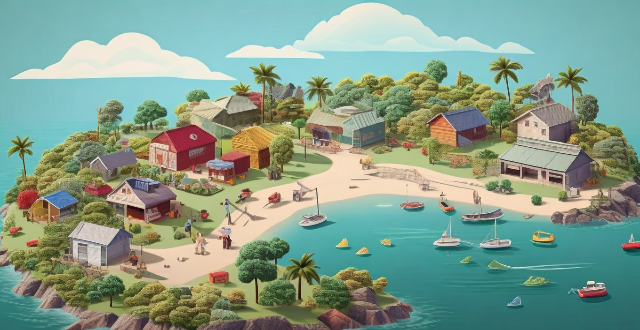The potential long-term consequences of climate change for future generations include environmental, social, and economic impacts. Environmentally, rising sea levels can cause coastal erosion and loss of island nations, while extreme weather events like hurricanes and wildfires become more frequent. Biodiversity loss is also a major concern, with species extinction and the spread of invasive species disrupting ecosystems. Socially, food security is threatened by changes in crop yields and water scarcity, while health risks increase due to heat-related illnesses and the spread of diseases. Displacement and migration may lead to conflict and instability. Economically, decreased productivity in agriculture and fisheries, increased adaptation and mitigation costs, and job losses contribute to economic instability. Addressing climate change requires global cooperation and significant investments in both adaptation and mitigation strategies to ensure a sustainable future.

The Potential Long-Term Consequences of Climate Change for Future Generations
Climate change is a pressing issue that will have far-reaching consequences for future generations. These consequences can be broadly categorized into environmental, social, and economic impacts. Let's delve into each of these categories to understand the potential long-term effects of climate change.
Environmental Impacts
Rising Sea Levels
- Coastal Erosion: As sea levels rise, coastal areas are at risk of erosion, which can lead to the loss of habitats and damage to infrastructure.
- Loss of Island Nations: Some island nations may become uninhabitable due to rising sea levels, causing mass migration and displacement.
Extreme Weather Events
- Hurricanes and Typhoons: The intensity and frequency of these storms are expected to increase, leading to more devastating impacts on communities.
- Droughts and Wildfires: Extended periods of dry weather can lead to droughts, which in turn can exacerbate wildfires, causing widespread destruction of ecosystems and property.
Biodiversity Loss
- Species Extinction: Climate change can alter habitats and disrupt ecosystems, leading to the extinction of various species.
- Invasive Species: Changes in temperature and precipitation patterns can facilitate the spread of invasive species, which can outcompete native species and disrupt ecosystems.
Social Impacts
Food Security
- Crop Yields: Changes in temperature and rainfall patterns can affect crop yields, potentially leading to food scarcity and increased prices.
- Water Scarcity: Droughts and reduced snowpack can lead to water scarcity, affecting both agriculture and drinking water supplies.
Health Risks
- Heat-Related Illnesses: Increased temperatures can lead to heat stroke, dehydration, and other heat-related illnesses.
- Spread of Diseases: Warmer temperatures can expand the range of disease-carrying vectors like mosquitoes and ticks, leading to an increased risk of diseases such as malaria, dengue fever, and Lyme disease.
Displacement and Migration
- Climate Refugees: As habitats become uninhabitable due to rising sea levels or extreme weather events, people may be forced to migrate, seeking refuge in other regions or countries.
- Conflict and Instability: Overcrowding and competition for resources in new regions can lead to social tensions and conflicts.
Economic Impacts
Decreased Productivity
- Agriculture: Changes in temperature and precipitation patterns can reduce agricultural productivity, affecting both small-scale farmers and large-scale agricultural operations.
- Fisheries: Ocean acidification and changes in ocean temperatures can affect fish populations, reducing the productivity of fisheries.
Increased Costs
- Adaptation Costs: Governments and businesses will need to invest in adaptation measures such as building sea walls or developing drought-resistant crops, which can be costly.
- Mitigation Costs: Reducing greenhouse gas emissions through renewable energy sources and energy efficiency improvements can also be expensive.
Economic Instability
- Job Losses: Industries that are heavily affected by climate change, such as tourism or fishing, may see job losses due to reduced demand or resource availability.
- Market Volatility: Fluctuations in resource availability and production can lead to market volatility, affecting global economies.
In conclusion, the potential long-term consequences of climate change for future generations are vast and multifaceted. Addressing this issue requires global cooperation and significant investments in both adaptation and mitigation strategies to minimize these impacts and ensure a sustainable future for all.